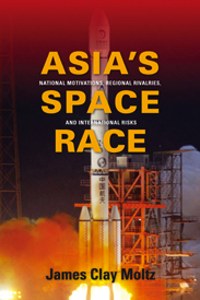So, last week, I mentioned Rob's Uncle John, who was a mission specialist on a couple of shuttle missions, and I suggested he had quite a sense of humor. (It runs in the family.) On a whim, I looked him up on YouTube, and wouldn't you know...
How do you "go" in space?
Space Studies Tuesday: Lesson Five: Planetary Orbits
Video day today!
First, a look at orbits:
LaGrange points are fun. Many SF writers use them for space stations. I have one at L5 in my rescue Sisters universe; it almost gets destroyed in "These Three" in Infinite Space, Infinite God II.
Here's how the L1 point looks. The lesson talks about the SOHO satellite and its uninterrupted view of the sun.
But more cool than that are the images:
Here's the WMAP, and why it's important, as explained in verse by Charles Osgood.
And a quick video of the map it's made:
Here's how the LaGrange points 4 and 5 look:
Just a funny today
I am still on vacation, so I'm leaving you today with a funny video. I chose this because it seems to reflect the kind of fun-loving attitude astronauts have. Why do I think this? Rob's uncle was a mission specialist on the space shuttle and he said when he filled out the questionnaires and came to the question "Have you ever had amnesia?" he answered, "I don't remember." Turns out everyone chosen for that mission had given a similar smart-alec answer.
Space Studies Tuesday: Lesson 4: Trajectories
Not the best quality video, but a good explanation of the slingshot effect. Incidentally, Bad astronomer has a blog that's worth reading: http://blogs.discovermagazine.com/badastronomy/
In this lesson, we see why the emphasis on apoapsis and periapsis was so important last lesson, as they are used in Hohmann transfers orbits. Incidentally, Hohmann transfer orbits are used for getting satellites into proper orbits, too.
Something I hadn't realized was that our opportunity to launch to Mars (with the greatest efficiency) comes only once every 25 months. Our next opportunity is March 2014. I've got to say, I'm not hopeful we can make it. unless we use a different launch system, like ion drive--but I'm not sure that's going to be ready by 2014, either. However, here's an interesting look at how it might have worked, based on a 1966 study. http://www.wired.com/wiredscience/2012/04/ernsts-ions-week-concludes-nerva-ion-mars-mission-1966/
Check out this blog--Colony Worlds
I'm on vacation for the month of June, so instead of writing a blog, I'm sending you to read some cool stuff I've discovered. This time, I'm introducing you to another blog called Colony Worlds: Seeking Out New Homes on New Worlds. It's a very cool blog, mostly of news stories on technologies that could assist us in our quest to colonize other planets. I already had it in my links log, but I think it deserves a highlight.
Check it out here--and tell them I sent you!
Space Studies Tuesday: Lesson 3-4: Gravity and Mechanics
Again, I think the class here is pretty self-explanatory, but I had one question: We can change the orbit by adding energy at any point, not just the apoapsis and periapsis, so what's the big deal? Basically, these are the times that it's more energy efficient to make changes in the orbit.
Book on Asia's Space Race
Moltz suggests that China isn't just going to start a space race with America or Russia, but with the smaller spacefaring nations like Japan and India. Maybe after the JPL class, we could take a book like this and do it for Space Studies Tuesdays. Let me know what you think.
Link to the review here.
Find it on Amazon here. Kindle Version here.
Space Studies Tuesday: Lesson 3-3 Gravitation and Mechanics
I know it may seem like I'm copping out by posting videos all the time for these lessons, but I find that they help me visualize the lessons better. (It actually takes me sometimes an hour or more to find good ones, too.)
Kepler's Laws are pretty easy to understand, I think, but this one explained them nicely.
Solar Sails in Science Fiction
 I'm on vacation in June, so rather than writing my own post, I'm directing you to some fun ones I've found. Today: Solar Sails in Science Fiction. It started with Jules Verne and continues--and it's influences actual science. Isn't that just like a good SF novel?
I'm on vacation in June, so rather than writing my own post, I'm directing you to some fun ones I've found. Today: Solar Sails in Science Fiction. It started with Jules Verne and continues--and it's influences actual science. Isn't that just like a good SF novel?Check it out here.








